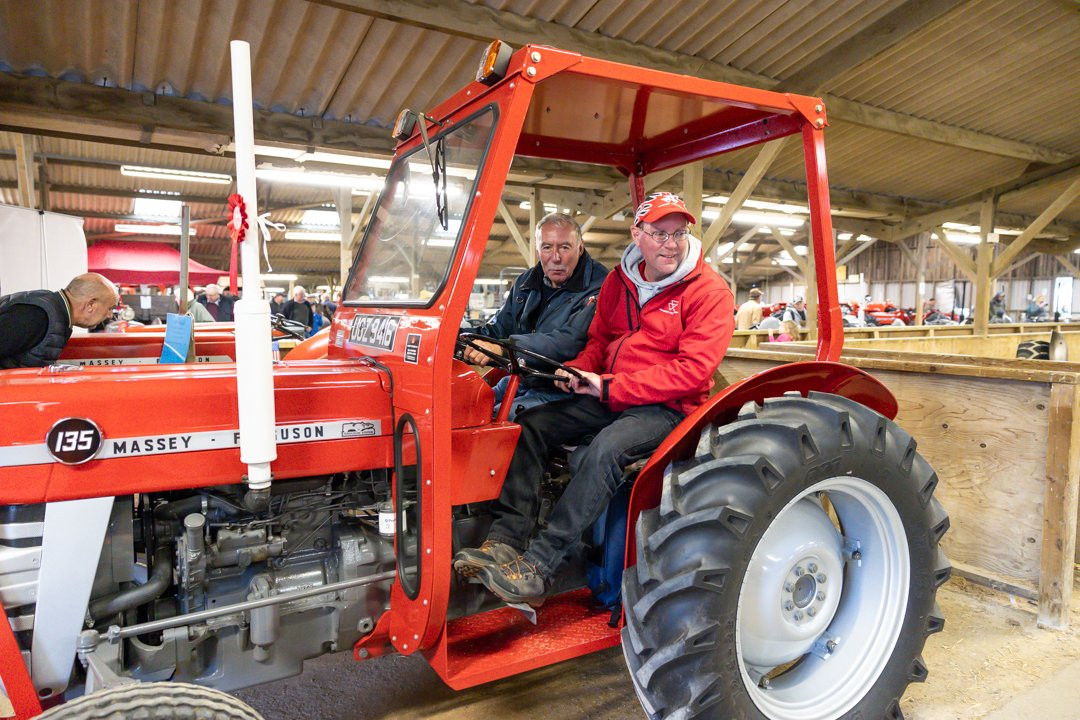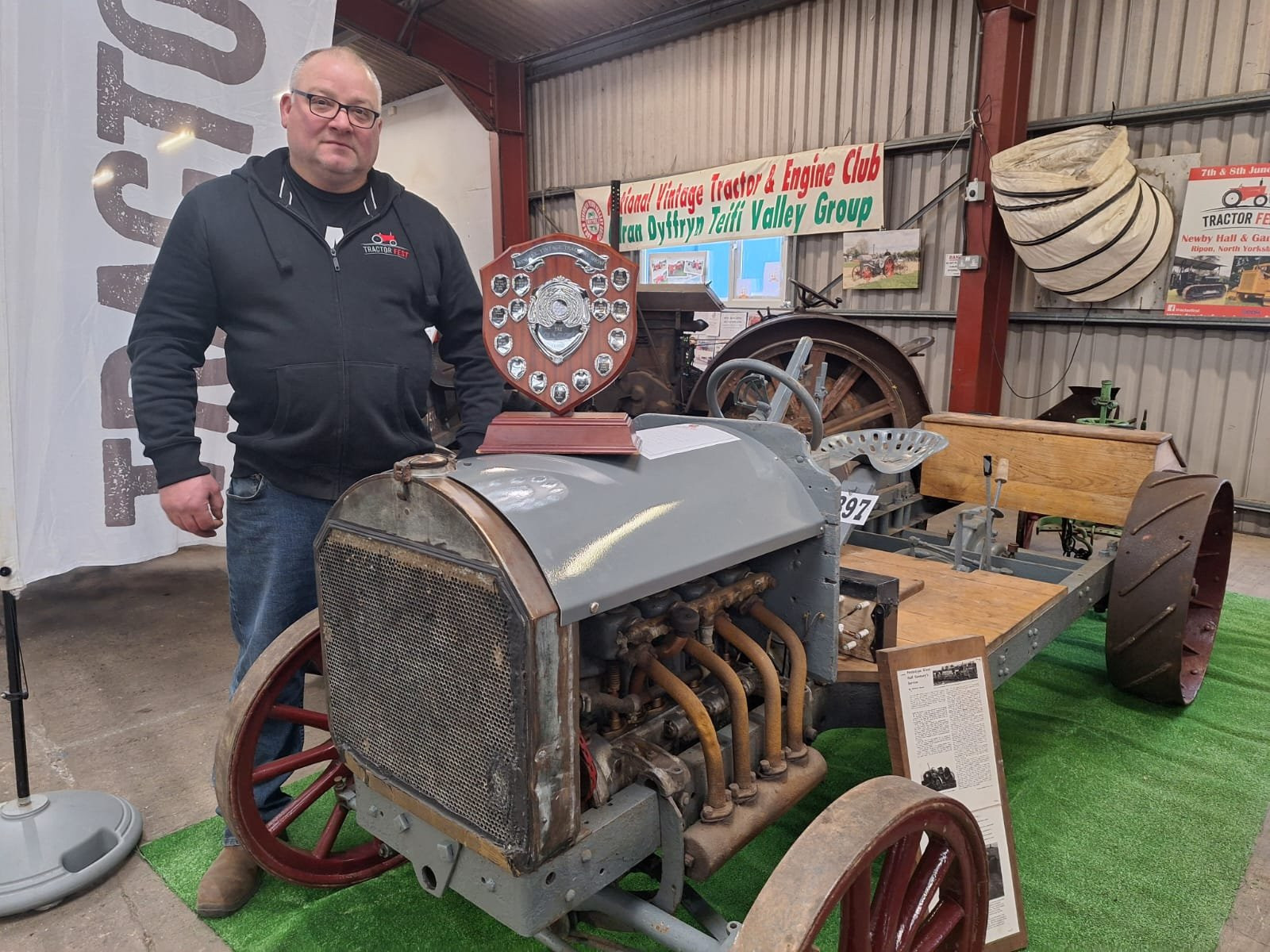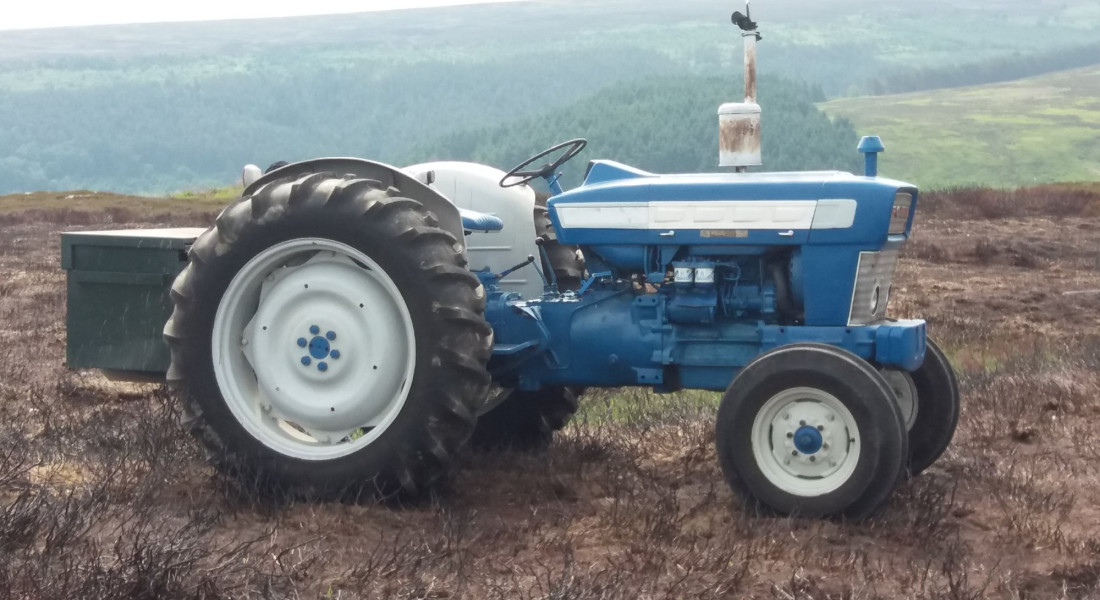Producing some of the most influential tractors and partnerships of all time, Ford will be well represented at this year’s Newark Vintage Tractor & Heritage Show, held at Newark Showground on 9-10 November.
Epitomising the famous handshake between Henry Ford and Harry Ferguson is the distinctive shape of the Ford N-series tractors, several of which will be on display. The show will also be honouring 60 years of Ford’s 6X 1000 (Pre Force) tractors - a series that revolutionised tractor engineering.
Henry Ford built and shipped 7,000 tractors to Great Britian between 1917 and 1918 to help mechanise and increase food production in the face of shortages owing to World War One.
Known then as Fordson, production took place in the US (1917–1928); Cork, Ireland (1919–1923 and 1928–1933); and Dagenham, England (1933–1964). Then, in 1964 a new factory was opened in Basildon, Essex, specifically designed for volume tractor manufacturing, and tractor production was moved there from Dagenham, with the Fordson name stopped and all tractors, thereafter, badged as Fords.
At this year’s show, Phil Gibson from the Ford & Fordson’s Association is helping to build a feature that observes one of the factory’s first and most iconic series of tractors – the Ford 6X 1000.
“Better known as the Pre-Force Fords by enthusiasts, they were designed so that they could be built in volume by any of the company’s factories for use in all types of agriculture around the world,” says Mr Gibson. “The series was made up of four models; the 37 horsepower (hp) 2000 Dexta, 46hp 3000 Super Dexta, 55hp 4000 Major, and 65hp 5000 Super Major.”
The series was introduced as a replacement for the Fordson models in the UK and the Ford N-series in the US. Production in the UK began at Basildon in 1964, but the model wasn’t officially launched until December 1964 at the Smithfield Show in London.
“They were totally different in style and how they were to be driven,” says Mr Gibson. “To smooth the series introduction to British farmers, Ford cleverly named them using familiar model names and introduced the new blue and grey paint scheme to the older ranges before the 6X tractors were launched. They are my favourite styling of tractor of all time.”
Mechanically, the tractors were also different, with the three smaller tractors sporting three-cylinder engines and the larger 5000 model a four-cylinder engine - all available with a new semi-automatic transmission system, the Select-O-Speed gearbox. “If you knew how to drive a tractor with the new transmission it was a very efficient tractor,” says Mr Gibson. “But a lot of people weren’t properly shown how to, and this did cause some issues, which saw a lot of people convert back to a standard transmission.”
The 4000 and 5000 models were also upgraded to have independent PTO – favouring hydraulic drive over mechanical. “That was also quite an innovative feature.”
By 1968, the 6X series had gained popularity – in particular the 4000 model – and Ford had a reasonable snag list and made improvements, which resulted in the launch of the 6Y series, better known as the Force series. The 6X tractors were then decommissioned.
Ashley Clough from Bottesford, Leicestershire, will be bringing two of his Pre-Force tractors to the show - a 3000 and a 4000 – as well as a Force 3000.”
The 1968 Pre-Force 4000 is his favourite; purchased from his boss in 2012 after he restored it during his 12-month apprenticeship. “It didn’t run because the engine had seized,” he explains. “So it was a full engine rebuild and cosmetic job.
“I know that it was originally purchased by a local farm from the Grantham Tractor Company. Today I use it in road runs and occasionally for haymaking.”
Wanting to expand his collection in 2017 he purchased the Pre-Force 3000 from a farmer near Lyme Regis, Dorset. “It is a bit different - at some point it had the Select-o-Gear replaced with a standard gearbox,” he says. “It also had a Lambourne safety cab fitted, but I removed it to take it back to its original features.”
BOX: When Ford met Fergie
Ford’s N-series was the American manufacturer’s reintroduction to the American tractor market in 1939, following Harry Ferguson’s demonstration in 1938 of the Huddersfield-built Ferguson Brown tractor. This featured Ferguson’s innovative three-point linkage system – the basis of linkage systems on modern tractors today.
Henry Ford was impressed and agreed to manufacture the tractor under the Ford name, with the famous handshake sealing the deal and securing supply of a new tractor design into the UK. “The partnership brought together Ferguson’s mechanical ingenuity and Ford’s superior engines and styling, as well as a huge supply chain and expertise in volume production,” says Campbell Scott, former director of marketing services at Massey Ferguson. “The net result of this partnership was a beautiful, well-engineered tractor – the Ford 9N.”
Launched in 1939, the Ford 9N was completely different to the tractors found in both American and British fields. Its mechanical engineering and high power-to-weight ratio made it a game-changer in agricultural engineering. “It could carry out operations that you would have otherwise needed a much larger tractor for,” says Mr Scott. “And Ford’s volume production and resources made it very competitively priced.”
The 9N was exported to Europe as the 9NAN; a four-cylinder, three-speed tractor modified to run on kerosene instead of petrol.
Around 99,000 Ford 9N tractors were manufactured before production ceased in 1942, after America entered WW2 and raw materials became short in supply, alongside pricing restrictions. However, Ford adapted and the 2N was born. “It was still a 9N in many ways – but a more basic version,” explains Mr Scott.
“Electrical components, like batteries, and rubber were in short supply, so early versions of the 2N had steel wheels and a hand-cranked ignition system.”
Later versions of the 2N were brought back up to a similar specification as the 9N, until production ended in 1947 to make way for Ford’s series upgrade, the Ford 8N, following the public fallout between Ford and Ferguson in 1945.
The most notable differences between the 8N and its predecessors were its four-speed transmission, increase in PTO and drawbar horsepower, the latter at 23hp compared to 16.9hp. The 8N also had a new look, donning two-colour paintwork.
Ford 8N tractor sales outdid those of both the 9N and the 2N, with around 524,000 tractors manufactured from 1947 to the end of its production in 1952.
• Tickets to the Newark Vintage Tractor and Heritage Show are available at: https://newarkvintagetractorshow.ticketsrv.co.uk/tickets/30
Discounted tickets are £15 for adults (17+ years) until 1 November, increasing to £19 thereafter. Children (16 and under) enter for free.
-

29 Nov, 2024
Two-seater tractor claims modified class win
-

29 Nov, 2024
The ‘unicorn’ tractor – famous but unseen

